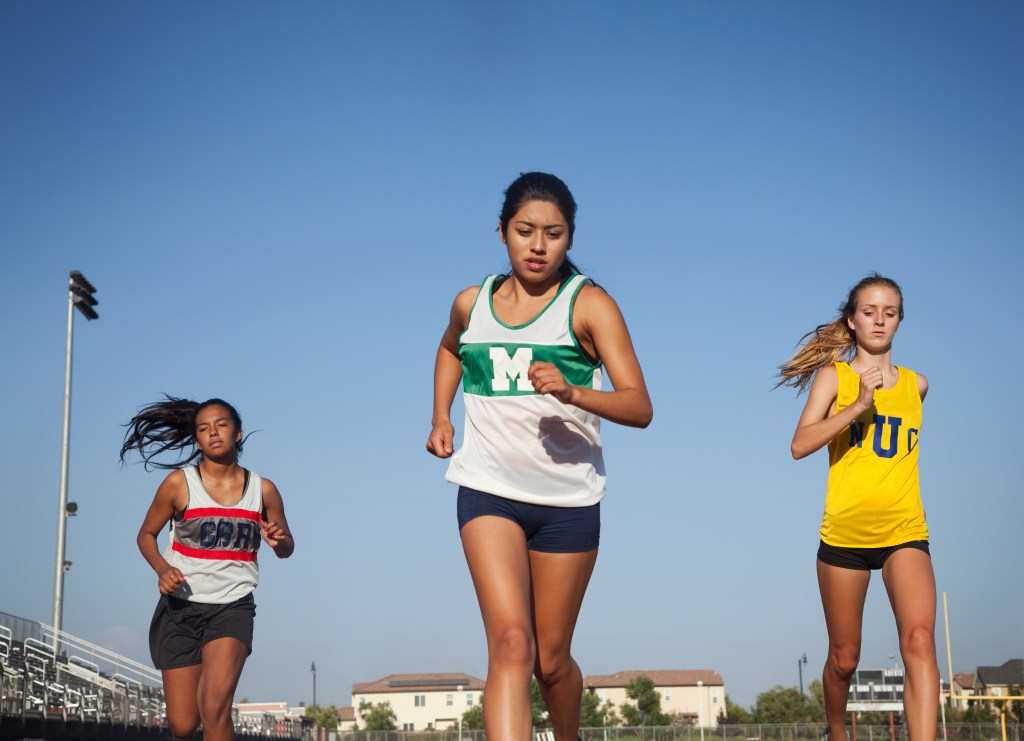The high school years are when school work, schedules, and sports all intensify for your teen. They might have practices, games, or meets every day of the week during their sports season. All that high-intensity activity is excellent exercise; there’s no doubt about that. Also, recent research has been published stating that young people who are a part of team sports have better social and emotional health, which can include lower percentages of anxiety and depression, than those who do not participate in those activities.
However, there is one consequence of participating in sports like basketball, track and field, tennis, gymnastics, and volleyball that parents of high schoolers and young college athletes may not be aware of: The intensity of the activity can lead to incontinence and bladder accidents for teen girls in particular.
We spoke with an expert to find out exactly why this may happen, how to prepare your teen for it, and some treatment options you have for better urinary health.
How do sports correlate with bladder leaks?
There is a statistical link between certain high-impact sports and bladder leaks: A 2021 study found that about 48.58 percent of young female athletes under 19 experience urine leakage during their sports. That’s right, that’s almost half.
Why might this occur? Sports that contain a lot of running, jumping, and bouncing are causing extra pressure on the pelvic floor muscles, which hold all of the internal organs that control your bladder and bowels in place, explains Dr. Barbara Frank, Harvard Medical School-affiliated OB/GYN and Attn: Grace Medical Advisor. Frank likens the pelvic floor to a hammock, and says that increased bouncing on that ‘hammock’ (think gymnastics, cheerleading, volleyball, and any sport where there’s a ton of jumping and running) can weaken the muscles of the pelvic floor.
Any kid who has chronic constipation might also have lower pelvic floor strength because all the pushing to go to the bathroom might also add to pressure on the pelvic floor, says Frank. There are ways to strengthen those muscles, just like your teen would with any muscle they’re using a lot in their sports activities.
So what can you do about this issue? The 2021 study also reported that about 80 percent of teens were too embarrassed to report this to their coaches to be able to change clothing, undergarments, or adjust their practices. That’s where it’s up to you as a parent to have a conversation with your teen (and their pediatrician, and maybe even their coach) about incontinence and potential solutions for dealing with bladder leaks.
Some tips to help your teen through this tricky situation
Anyone struggling with bladder leakage at any age may think they’re alone, but that’s not the case. Here are Frank’s top recommendations for dealing with teen incontinence in sports.
Have a conversation with your pediatrician.
If your teen is experiencing incontinence during a sport, your pediatrician should know about it. You should start the conversation with your teen, just like you would a conversation about periods or sex — and then allow your pediatrician to chime in during an appointment with recommendations for solutions, like keeping extra underwear in their gym locker or wearing incontinence liners or pads, Frank advises. (One option your doctor may recommend is a Poise Impresa Bladder Control Support, which works like a tampon to stop leaks.) Your teen’s doctor might also suggest other avenues like a referral to a gynecologist or pelvic floor therapist.
Encourage your teen to practice kegel exercises.
Anyone who’s given birth vaginally and had to work on pelvic floor strengthening after that likely knows what a kegel is, but your teen might not. Ask your pediatrician or OB/GYN to instruct your teen on how to do a kegel exercise. “A kegel is the same feeling of holding in urine,” says Frank. It typically takes about three to four months to see improvement after doing three sets of 10 kegels per day, holding the kegel for eight to 10 seconds, she adds.
Make sure your child is not constipated.
This is one of the many things your teen might not share with you: If they’re having regular trouble with constipation, speak to the pediatrician about treating that first before treating any pelvic floor dysfunction, Frank suggests.
Note that if your teen doesn’t get a period, this could influence incontinence.
“Long distance runners might be really thin, and lose their period due to exercise-induced amenorrhea,” Frank says. “Low estrogen levels (which often occur when the menstrual cycle is not regular) can increase incontinence.” It’s important for your teen to see a gynecologist at this point, who might suggest options like the birth control pill to regulate the cycle.
Tell them to still hydrate, hydrate, hydrate!
Urinary leakage may provoke anxiety around drinking water for your teen, to avoid having accidents. This is a valid concern, but it is so important to still drink enough water while playing sports (parents, if you need to bring your concern to coaches to make sure there are enough water breaks, do so). Limit your teen’s consumption of caffeine, carbonated beverages, and of course alcohol — these drinks can increase urinary urgency and might make bladder issues worse, Frank says.
Your teen likely isn’t going to be the one to bring up their bladder issues, so it’s up to parents and coaches to get conversations started and make sure your players are comfortable and feeling well enough to get on the court, field, or mat and play the game.
Before you go, check out these items that should be in any workout recovery kit:
Source: Read Full Article


